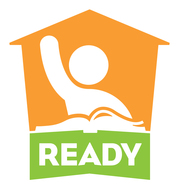School and Student Performance Up in 2016
More than 75 percent of public schools overall earned grades of C or better in the third year of the state’s A-F grading system, according to results presented to the State Board of Education at its September meeting. Nearly a third (32.7 percent) of the state’s 2,459 traditional public and charter schools with grades for the year achieved As and Bs – including the A+NG designation for schools that earn an A and do not have significant achievement and/or graduation gaps – up from the 29.4 percent that did so in 2013-14, the first year that schools were assigned letter grades. The proportion of schools receiving Ds and Fs fell last year to less than a quarter (23.2 percent) of all schools – a decline of nearly 20 percent among schools with the lowest grades over the last three years, from 707 to 571.
The state’s four-year high school cohort graduation rate, which factors into the letter grades for high schools reached a new high of 85.8 percent in 2016. On state exams, the percentage of students proficient in math and science improved across all grades in elementary, middle and high school; reading and high school English performance was more mixed.
Bill Cobey, chairman of the State Board of Education, said that the latest accountability results reflect a clear focus on a set of goals aimed at ensuring students finish high school well prepared. “North Carolinians should feel confident that their public schools continue to improve and rise to the higher expectations for college and career readiness that the board set beginning with the 2012-13 school year,” Cobey said.
In particular, he pointed to overall proficiency rates on end-of-grade and end-of-course exams, which exceeded the board’s goals for the 2105-16 school year.
(Due to rounding, the percentage of schools may not total 100 percent. School grades are based on a 15-point scale. Low-performing schools are identified annually as those that receive a School Performance Grade of D or F and do not exceed growth.)

Reading Achievement
Comprehensive Plan Report
Includes Legislative Recommendations
Elementary schools began the fourth year of the Read to
Achieve law this fall with its intensive focus on reading instruction and
support, especially at the third grade. The goal of Read to Achieve is to
ensure that students are reading on grade level by the end of third grade. This
annual report to the General Assembly includes five recommendations for future
legislation to strengthen reading and literacy efforts. These recommendations
include providing instructional coaches in each elementary school to work with
classroom teacher and literacy instruction; expanding the number and future
development of Master Literacy Trainers to extend professional development in
this area; expanding transitional and accelerated classes for students who move
to fourth and fifth grades without full proficiency in reading; more
recognition of the work of K-2 teachers in reading instruction and in student
reaching achievement; and consideration of a statewide literacy campaign to
highlight why literacy is essential and how adults can help students.
 Board Members Consider Priorities for Budget Request
State agencies are in the process of preparing budget requests for the Governor’s 2017-19 budget recommendations to the General Assembly. This year, the State Board of Education is considering priorities identified during regional listening meetings with local school district leaders as well as items to support the Department of Public Instruction in its delivery of services to districts.
As Board members finalize their budget request, they will be working under the guidance of the Office of State Budget and Management, which limits each agency’s request to 2 percent of the agency’s current appropriation and requires agencies to identify a commensurate budget cut that would also be enacted. This ensures that any new budget priorities are addressed without the provision of extra funds.
NCDPI Chief Financial Officer Philip Price presented a variety of possible budget request items this month for discussion by Board members. This discussion will continue in October and members will act on the expansion budget request in November. Possible items include funding for general professional development for teachers ($13.5 million for districts); professional development on digital learning and standards ($15 million split between districts and regional service alliances); the purchasing of more digital content and lesson plans for teachers ($6 million); bringing textbook funding up to at least $90 million; restoring funding for instructional supplies and equipment ($46.9 million); funding to allot additional assistant principals and teacher assistants ($95.5 million); a new allotment for school building technology support ($84.6 million) and funding for additional instructional support personnel to help schools deal with social and emotional issues related to students ($34.8 million). Local school superintendents have identified extra support for students’ emotional needs as one of their priorities.
|

Proof of Concept
Study is now
NC Check-Ins
Last school year, North Carolina operated a proof of concept
study to try a new assessment process for elementary and middle school
students. This proof of concept – now called NC Check-Ins – relies on three
shorter, interim check-in assessments plus an end-of-grade assessment to gauge
student learning and progress.
Teachers say they appreciate the Check-Ins because they
provides them with more immediate and usable feedback about their students
throughout the year. This allows teachers to adjust instruction to improve
student learning.
This year, the NC Check-Ins continue with a larger number of
districts and schools. In grade 5 mathematics, 79 districts, 169 schools and
15,023 students are participating. In grade 6 English language arts/reading, 73
districts, 111 schools and 15,915 students are participating. Also, 18
additional districts and three charter schools have volunteered to be in the
program alongside those selected to provide a sample for evaluating this new
approach. For students and teachers, the NC Check-Ins can mean fewer
assessments since districts no longer need to provide local benchmarking tests.
|
Abstinence Grants
Provided to 28 Districts
Federal Title V State Abstinence Education grants of $50,000
each were awarded to 28 local school districts to support student decisions to abstain from sexual activity by
providing abstinence programming specifically focused on groups that are most
likely to bear children out-of-wedlock, such as youth in or aging out of foster
care.
As a condition of
receiving this grant, North Carolina must certify that all abstinence education
materials that are presented as factual are medically accurate and grounded in
scientific research. Districts receiving this grant are: Alleghany, Anson,
Ashe, Bertie, Bladen, Caldwell, Edenton-Chowan, Cumberland, Duplin, Edgecombe,
Granville, Greene, Halifax, Hertford, Hoke, Lee, Lenoir, Montgomery,
Northampton, Richmond, Robeson, Sampson, Scotland, Swain, Vance, Warren,
Washington and Wayne.
|